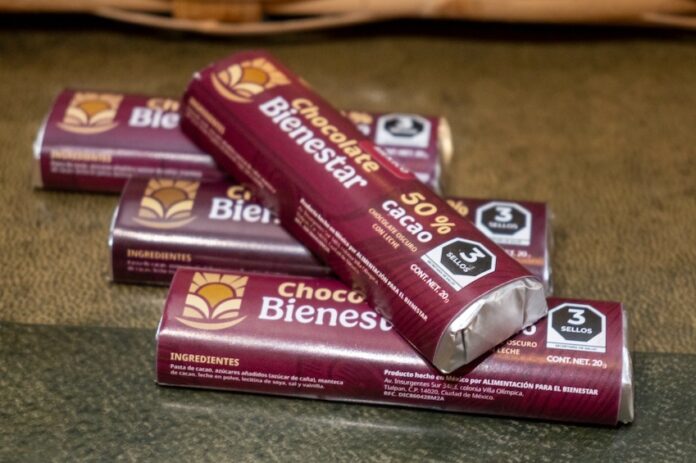The Sheinbaum administration’s campaign to offer Mexican-made healthy food options to the public will soon make available a product that’s sure to make a lot of people happy — “Wellness Chocolate.”
This “Chocolate de Bienestar” is part of the government’s “Food for Well-Being” strategy, which aims to bring nutritious and affordable food options to consumers while supporting national producers, particularly those in the southern states of Tabasco and Chiapas — a region that has historically lagged behind other regions in several social and economic indicators.
Les comparto la cápsula que presentamos en la #MañaneraDelPueblo junto a nuestra presidenta @Claudiashein sobre nuestro #ChocolateBienestar 🍫 y el origen de su ingrediente principal: el cacao. Gracias al trabajo de las y los cacaoteros de Tabasco y el norte de Chiapas,… pic.twitter.com/Q90xRG5XPS
— María Luisa Albores González (@Mary_Luisa_AG) July 10, 2025
“Thanks to the efforts of cacao farmers in Tabasco and northern Chiapas, participants in the #SembrandoVida program, we’re now able to bring nutritious, affordable food with a deep social foundation to communities throughout Mexico,” head of Food for Well-Being María Luisa Albores wrote in her official X account.
Now one of those affordable foods will be chocolate, a favorite in Mexico since the time of the Aztecs, when it was so highly prized that its consumption is thought to have been reserved for the upper and priestly classes. Now it will be available to the general public in a presentation both more affordable and, allegedly, healthier than the commercial offerings.
Studies have shown that chocolate improves cardiovascular health via its antioxidants, provides energy, helps control blood pressure, improves cognitive capacity, satisfies hunger and lifts mood.
Albores adds that Wellness Chocolate is also a bone-supporting source of vitamins and minerals.
The down side is that the cacao bean from which chocolate is made is naturally bitter, prompting most commercial brands to include vast amounts of sugar. The Wellness Chocolate attempts to minimize that problem by striking a suppposedly healthier balance between natural cane sugar and the cacao itself. For example, the Wellness Chocolate in bar form uses 50% cacao and 35% sugar, which puts it in the “semi-dark” category with a relatively low fat content.
Still, the packaging dutifully includes warning labels for excess sugar, calories and saturated fats.
Albores revealed that the Wellness Chocolate will be available for purchase at the more than 25,000 Wellness Stores across the county, with its distribution occurring in stages.
“We will reach all of our stores,” she said. “We’re planning a three-month project to ensure that we can deliver these products directly from the countryside of Chiapas and Tabasco to consumers across the country.”
According to the government, the chocolate will be available in three presentations:
- Chocolate bar containing 50% cacao, and priced at 14 pesos (less than one dollar).
- Powdered chocolate with 30% cocoa, priced at 38 pesos (US $2)
- Chocolate de mesa or tablet chocolate, with 35% cacao, priced at 96 pesos (US $5)
